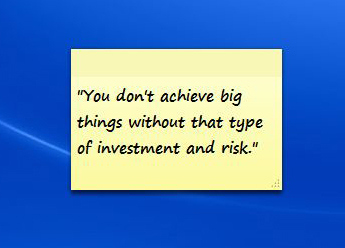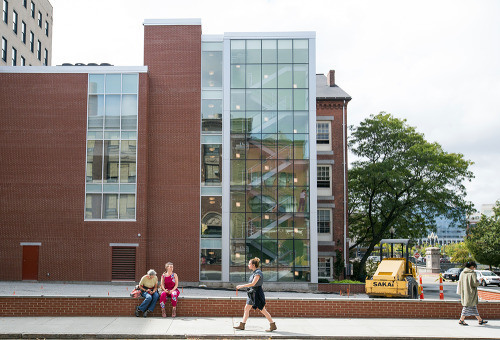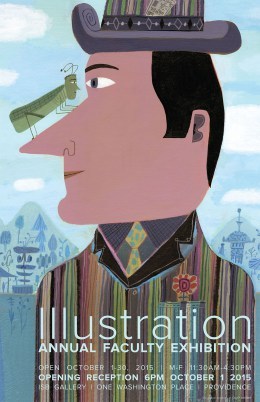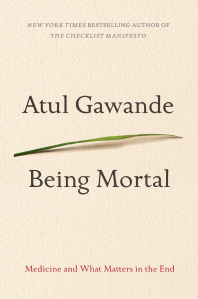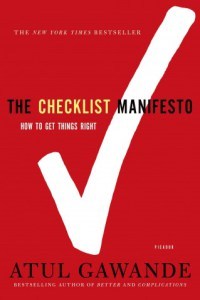Clara Lieu's Blog, page 25
November 2, 2015
The Right Words at the Right time
One of my students at RISD once wrote on their self-critique, “Art is hard.” I couldn’t have said it better myself. When you work professionally as an artist, there are the artistic challenges of creating the artwork, but on top of that, you have to build a very thick skin to handle the constant bombardment of rejection, and be incredibly tenacious despite difficult circumstances. From my point of view, creating the artwork is the “easy” part of being a visual artist.
For me, the greatest struggle is when my confidence in my work wavers. Some days, I feel empowered and confident, my artistic vision is crystal clear, and my work ethic and energy is boundless. Other days, I feel overwhelmed, terribly discouraged, and have no faith in myself. You would think after almost two decades, I would have figured out a permanent solution, but I don’t think that one exists.
Last week I had one of those moments, my current project is an enormous investment and risk, probably the biggest I’ve taken on in my career. (I can’t reveal more at this point, hopefully soon!) Unlike my previous work, where I could take responsibility for the entire project, this project involves other people, so it’s a completely different dynamic that I’m not used to. I know that fundamentally, I am extremely passionate about this project, but it’s very nerve wracking to put in so much commitment and labor into something that might go nowhere. I knew that I had to find a way to maintain my enthusiasm and optimism despite the constant threat of failure that loomed over me.
I wrote to one of my friends, Gina Perry, who is a children’s book illustrator and expressed my fears and anxieties to her. She said that my situation sounded very similar to children’s book publishing, where you have no choice but to pour in hundreds of hours of unpaid work before you see a contract. Her words to me were: “You don’t achieve big things without that type of investment and risk.”

Illustration by Gina Perry
Her words really resonated in that moment, especially because I know that she has years of experience, deep in the trenches, dealing with rejection, chasing her artistic goals. Now I have a sticky note on my desktop with her words. When I feel my confidence sinking, that sticky note lifts me up.
Visual artists have to learn to live with uncertainty and still be willing to take intimidating risks despite the lack of guarantees. As a reaction to this, I frequently crave any moment in my life where something is guaranteed. I love baking because I know that if I buy the required ingredients, follow the recipe exactly as written, that in the end, I’ll definitely have muffins to eat. Unless the recipe is bad, or I make some really stupid mistake, those muffins are guaranteed. Sometimes being a visual artist is like doing all of those tasks, but then every time you open the oven, all you find is a pile of ashes. Gina got me back on track last week, and I’m hoping that sometime in the near future, there will be muffins when I open my oven.


October 26, 2015
RISD Health +
I’m featured on the new RISD site, “Health +”, which represents a group of RISD faculty members “who are engaged in health and healthcare issues, as demonstrated by their work as professional artists, writers, designers, and educators.”


October 21, 2015
What was your experience learning visual art in high school?
Visual art has always been the most compelling force throughout my entire life that I could always turn to, no matter how tough times were. My desire to draw as a child was insatiable, and I relished every weekly art class in elementary school.
In high school, I found myself with meager options to study visual art. I was a decent academic student, but I was not a star athlete, the two areas that were glorified by the other students. Socially, I was awkward, shy, isolated, and always felt out of place. Visual art was the thing I knew I was good at, the only subject I deeply enjoyed. For all the other students, art class was a joke, the class you took when you wanted an easy A. The art teachers I had were incompetent, and consequently, the art classes were remedial and pathetic. Basically, I had to teach myself.
I felt alone, lost, and embarrassed by my interest in visual art. Other students were studying classical music with world renowned musicians at places like the New England Conservatory Preparatory school, and I heard constantly about students who were being sent to prestigious, national soccer tournaments. For me, there was no equivalent in the visual arts. And this was at an excellent public school in an affluent neighborhood, I can’t imagine circumstances are any better at most other schools.
From speaking to my students, it upsets me to find out that the situation is exactly the same as it was twenty years ago for me. The vast majority of high school students who want to learn visual art are on their own.
So today, I want to hear from you: what was/is your experience learning visual art in high school? Are you on your own like I was? What would have helped you? Comment below, or email me at clara(at)claralieu.com.
If all goes well, I might be taking direct action on your suggestions sometime in the very near future!


What was/is your experience learning visual art in high school?
Visual art has always been the most compelling force throughout my entire life that I could always turn to, no matter how tough times were. My desire to draw as a child was insatiable, and I relished every weekly art class in elementary school.
In high school, I found myself with meager options to study visual art. I was a decent academic student, but I was not a star athlete, the two areas that were glorified by the other students. Socially, I was awkward, shy, isolated, and always felt out of place. Visual art was the thing I knew I was good at, the only subject I deeply enjoyed. For all the other students, art class was a joke, the class you took when you wanted an easy A. The art teachers I had were incompetent, and consequently, the art classes were remedial and pathetic. Basically, I had to teach myself.
I felt alone, lost, and embarrassed by my interest in visual art. Other students were studying classical music with world renowned musicians at places like the New England Conservatory Preparatory school, and I heard constantly about students who were being sent to prestigious, national soccer tournaments. For me, there was no equivalent in the visual arts. And this was at an excellent public school in an affluent neighborhood, I can’t imagine circumstances are any better at most other schools.
From speaking to my students, it upsets me to find out that the situation is exactly the same as it was twenty years ago for me. The vast majority of high school students who want to learn visual art are on their own.
So today, I want to hear from you: what was/is your experience learning visual art in high school? Are you on your own like I was? What would have helped you? Comment below, or email me at clara(at)claralieu.com.
If all goes well, I might be taking direct action on your suggestions sometime in the very near future!


October 19, 2015
I’ve become the absent-minded professor
When I first started teaching at the college level in 2005, I remember staunchly pledging to myself that I was going to eternally remember and appreciate every single student I ever had. Nothing bothered me more as a student than when professors didn’t take the time to get to know each student as a unique individual.
Now it’s ten years later, and I find myself walking around the RISD campus, bumping into students who wave and call out my name. Once in a while I remember a student’s name, but more often than not, I have to wave back and just say “Hello” without a name. All I can think to myself is: “I totally know you were my student, but I can’t remember your name, or what semester I had you.”
Obviously, that pledge I initially made is long gone. When I contemplate the sheer number of students I’ve taught in one decade, the numbers are dizzying. The other day I was looking at my grade archives, and I’ve now taught 25 classes of Freshman Drawing at RISD, (20 students per class) and that’s not counting all the other courses I’ve taught in the Illustration Department, the Printmaking Department, and the three other schools I taught at before. I’m at the point now where I’ve had so many students that if you’re not in my class right now, it’s pretty much guaranteed I won’t remember your name. (and if you shave your head and/or dye your hair, there’s no chance)
I casually told this to a student once, and so he asked me how he could get me to remember him. I told him that he would have to pull some totally outrageous stunt in class, or, be extraordinarily amazing or terrible in some manner. That semester, he put himself on a personal mission to cement himself into my brain. 
He succeeded, and I will never, ever forget him. He performed the most precise impersonation of my critiquing style for the entire class one day to hysterical laughter from the other students. I don’t think I’ve ever laughed that hard in my entire life. He had all of my physical mannerisms, hand movements, the right phrases and vocabulary, the correct intonation of my voice, and the facial expressions down to an exact science. (apparently, there’s a point in crits where he says that I “go in for the kill” by bending my knees, lunging my body forward, and pointing my finger at the drawing) Let’s just say that I learned things about my physical movements that I never knew before. Teaching certainly does expose you to a high level of scrutiny in a way that other professions do not!


October 16, 2015
Generations of students and teachers
The newly renovated Illustration Studies building at RISD
Since I’m teaching in the Illustration department at RISD this semester, I’ve gotten the chance to reconnect with some of my former professors who I haven’t seen in years. I was an Illustration major at RISD, and many of the professors who taught me are still teaching in the department. I remember how odd that transition was at first. When you’re a student, it never crosses your mind that your teacher might become your colleague one day. I started teaching at RISD in 2007, and suddenly, these professors who I had tremendous respect for, who I was always at least slightly intimidated by, who were pivotal figures in my development as a visual artist were sitting next to me in the faculty lounge eating lunch.
A few weeks ago I ran into one of my former Illustration professors who I hadn’t seen in several years. I always find that my personality and behavior shifts to “fit” the person I’m with. At times it can feel like I’m practically a different person depending on who I’m with. I found talking to this former professor that all of the sudden, I was 19 years old again, and it was wonderful. There are a lot of things I don’t miss about being a student, (roommates, moving every year, having no money, never exercising, etc.) but one thing I do miss is that lovely, reassuring feeling that my professor will be there to catch me when I fall on my face.(even though they’re simultaneously whipping me to do my best work)
As a professor, a lot of my time and energy is devoted to giving my students various forms of support as they push through their creative process. I’ve been teaching long enough that I feel confident dispensing advice and helping students when they feel anxious or worried. I’m able to suggest concrete actions and tell them that yes, it will be okay. And yet I can’t seem to do this for myself. I have to hear it from someone who is at least a generation above me, who I trust and respect.
Talking to this former professor, I felt this inspirational rush that felt so familiar and almost nostalgic from my time as a student. I had been feeling self-conscious about this project I’m working on (I hope to be able to talk about that publicly soon!) and this professor totally laid down the law and told me point blank “Clara, forget about what other people think!” He gave me some other gems of wisdom like “if you’re bored, it’s time to move on”, and “any time you need a pep talk, give me a call!” He pumped a vital sense of motivation and enthusiasm back into me, and it felt great.
One of JooHee Yoon’s recent editorial illustrations
I’ve also now found myself wedged between 2 generations with a milestone of my own: my former student, JooHee Yoon is now teaching an elective in the RISD Illustration department. JooHee was in my sophomore drawing class in the Illustration department back in 2008 and I remember her student work with great clarity because of her fierce determination and incredible innovation in her work. She’s now published several books and has had her striking editorial illustrations featured in the New York Times and The New Yorker. I hadn’t seen her in years, but when I ran into her a few weeks ago, we had a lively conversation about that transition of moving to the other side of the fence to become a professor at your alma mater.
Here’s an ink drawing JooHee did when she was in my sophomore drawing class.


October 7, 2015
How to Ask for a Letter of Recommendation
College admissions season has already started with early decision application deadlines coming up next month. I’m already getting my first flood of requests for letters of recommendation from students. On average, I write about 20 letters of recommendation a year. That may not sound like that many letters to write, but I devote a lot of time to each letter so that I can best articulate each student’s unique strengths to support their application. I can imagine from the Admissions office perspective, many letters of recommendation probably all start to sound the same after a while, so I work hard to make my letters distinctive.
Because I get so many requests, I require my students to follow specific guidelines in order to get a letter from me. I’m sure each professor has their own requirements, so check with each of your professors and see what they require. Here are my policies:
1) Achieve a certain grade or higher in my course.
When I write a letter of recommendation, I have to feel that I can enthusiastically rant and rave about how incredible the student is, in terms of both their character and academic accomplishments. I won’t say here exactly which grade is the cut off point, but it’s pretty high up there.
2) Ask politely and don’t make assumptions.
You might think this is obvious, but you’d be surprised how many students are not polite when asking for a letter. It’s important to know what’s good practice when asking, because this is definitely a process you’ll have to do repeatedly throughout your career. I’ve had students email me, stating that they listed me as a reference on a job application without ever asking my permission. That alone is presumptuous enough that I will tell the student to remove me from their reference list. One student asked for a letter and in the same email, told me that they had already sent the school my email and that I should be expecting an email where I could upload my letter. I had a student who asked me to write them a letter for a grant application that didn’t exist yet, and then continued to pester me about it even after I said no twice. It got to the point where I had to tell them, point blank, that I wouldn’t write letters for them in the future. Ask politely, and wait to hear my response before you do anything.
3) Provide 1-3 months advance notice of your earliest deadline. Even if the student got an A in my course, if they ask 2 weeks before their deadline, I won’t write the letter. My schedule is so densely packed that I simply can’t take on last minute requests. I am sure that this is also the case for all other professors.
4) Correspond with me promptly throughout the process.
Asking for a letter is just the beginning of a mutual effort between myself and the student. Don’t disappear after I’ve agreed to write the letter, you have to be involved every step of the way. There are so many little details that have to be followed up on, and when students don’t provide information I need promptly it makes everything unnecessarily complicated.
5) Say thank you.
This is a mandatory habit to establish for the future. I’m appalled at how few people do this, especially when it’s so easy to do, and takes so little time. I’ve had several instances where students emailed me asking for help with something, I took the time to write them a lengthy email with advice, and then never heard from them again. I guess they got what they needed from me, but I find it rude to not even reply with a quick “thank you.” It bothers me enough that I have a list in my head of who didn’t say “thank you.” Sometimes that’s the difference between whether I recommend someone for a job or not. A few weeks ago, I got an email from a lawyer I had never met in person before, thanking me for referring one of my students to them. That email made a difference; that lawyer is now cemented in my head as someone who is polite and professional.
Writing letters of recommendation are part and parcel of being a teacher, and I am always happy to help my students however I can. Plus, when you have phenomenal students, the letters practically write themselves. If you’re a student, be prepared to put in effort on your end, I can guarantee that your professors will appreciate it!


September 30, 2015
RISD Illustration Annual Faculty Exhibition
I’ll be at the opening tomorrow evening from 6-8pm in the newly renovated Illustration Studies Building at RISD for the Illustration Annual Faculty Exhibition. I have a large etching ink & lithographic crayon figure drawing in this exhibition. Hope to see you there!
ILLUSTRATION ANNUAL FACULTY EXHIBITION
Exhibition Dates: Oct. 1-Oct. 30, 2015
Opening Reception: Thurs., Oct. 1, 6-8pm
Gallery Hours: Mon.-Fri. 11:30am-4:30pm
RISD Illustration, ISB Gallery
55 Canal Walk
Providence, RI, 02903


September 18, 2015
Unexpected Influences
I always encourage my students to supplement their studio practice by looking at visual artists who work with similar subject matter, or who they have stylistic correlations with. If you want to paint portraits, most people would agree that you should study great portraits throughout history, as well as contemporary portraits. As a student, and later as a professional, that’s exactly what I did when I wasn’t in the studio creating work.
There are many visual artists whose artwork I’ve studied in tremendous depth as a direct influence on my own artwork. Giacometti, Kollwitz, Caravaggio, Messerschmidt, William Kentridge, and Michael Mazur have been artists I’ve revisited countless times.
Kathe Kollwitz, Woman with Dead Child
I have specific experiences and moments that I associate with each of these artists. My junior year at RISD, I went on the European Honors Program, and was hell bent on seeing every Caravaggio painting in Europe. (I came pretty close) I saw my first Kollwitz prints at the Study Room for Drawings and Paintings at the Metropolitan Museum in NYC during graduate school. I had never so physically close to a print of hers before. I’ve haven’t seen a Messerschmidt sculpture in person, but my interest in his work got me to buy the first expensive art book I’ve purchased in years. ( I love art books, but when prices start at $60, you realize that your money is better spent elsewhere most of the time)
My students are often surprised to hear that I find artwork that is dissimilar to mine just as fascinating, and maybe even more so. The subject matter and creative process of these artists is so vastly different from mine, that I can’t wrap my head around how they arrived at creating their artwork. I’ve been intrigued by Sopheap Pich, El Anatsui, Chiharu Shiota, Sarah Sze, to name just a few.
However, recently I’ve been traveling far beyond these contrasting artists, deliberately pushing myself away from visual artists altogether. Many people assume that because I’m a visual artist, all I want to look at and read about is visual artists. Lately though, it seems like I’m not interested in reading about or looking at visual artists at all. You would think my lack of interest right now would be a negative thing, or a sign of being burned out. Actually, I feel more creatively stimulated than I’ve felt in a while, all because I started reading books again.
Oddly enough, my desire to read books got started because I stopped watching TV, and needed a way to unwind before going to bed. I think I quit TV because I’ve now watched every video remotely related to Louis CK, or because the last 4 movies I saw made me wish I could get those 2 hours of my life back. (Interstellar, Exodus, Edge of Tomorrow, and Theory of Everything. Okay, I should have known with Exodus what I was getting into, but I had hope with the other three)
I always enjoyed reading books before college, and I’m embarrassed to admit that I can count the number of books I’ve read since college on one hand. Part of this is because I’m an extremely picky reader, and if I’m not utterly captivated by the book within 10 pages, I can’t go on. I have to read books that are so incredibly engrossing that I can’t put the book down. With this stringent requirement, it can be hard for me to find the motivation to read because I am so easily disappointed.
In the last few months, I’ve gravitated towards books about food, comedy, and medicine. (you can see my book lists on my Goodreads account.) I’ve been fascinated by seeing how other fields function, and their various methods of thinking. These fields might seem totally unrelated to visual art, but I’ve found many parallels. I’ve been ruminating about how strategies used in other fields could be applied in my own artwork and teaching.
I’ve found myself mesmerized reading about the intricacies and issues in medicine discussed in Atul Gawande’s books. “Being Mortal: Medicine and What Matters in the End” was so riveting that I actually became sad when my Kindle app told me that I had finished 80% of the book. I just finished “The Checklist Manifesto“, which has less content about medicine than Gawande’s other books, but was just as gripping. In this book, I found concrete, practical strategies that I might eventually implement into my classroom. For example, next week I’m introducing linear perspective to my sophomore drawing class at RISD. If you understand linear perspective, it seems so simple, but if you don’t, it can be daunting to learn the rules and terminology of linear perspective, and then figure out how to practically apply those rules as you draw. After reading Gawande’s book, I thought about creating a checklist based on linear perspective for the students to use as they work on their drawings in class.
I’m not nearly finished with looking at and researching visual artists by any means, and certainly I will be back for more at some point. For now though, it’s lovely to stumble upon resources for my artwork and teaching in places where I don’t usually expect it.


September 14, 2015
A Different First Day of Class at RISD
RISD started the fall semester last week, and although I went through all of the familiar tasks and emotions of the first day of classes, this year was noticeably different compared to the last several years.
The vast majority of classes that I’ve taught over the last 9 years I’ve been at RISD has been Freshman Drawing, although I have taught in the Illustration department and in the Printmaking department a few times. My Freshman drawing course has evolved a lot over the years, but the changes in the course have occurred incrementally because I usually taught that course 2-3 times a year. There have been countless tweaks along the way, as well as more dramatic adjustments as I reflected upon the course at the end of every semester. Eventually, I got to the point where I had taught this course so many times that I stopped referencing detailed notes I had written for each class. I had cemented all of the fundamental activities and core content in my head. In recent years, teaching this course became as natural as breathing.
This semester I’m teaching a course for sophomores called “Drawing I: Visualizing Space.” I taught this course way back in 2008, and that experience was definitely helpful in planning the course this time, especially in terms of teaching linear perspective. I constructed numerous charts and graphics which were hugely tedious to make at the time, so it felt great to be able to just drop those images into my course materials.
However, 2008 is far back enough that I’m in a completely different place as an artist and teacher. After unearthing those course materials from 2008, I found myself compelled to write the course almost entirely from scratch this time. For example, only one homework assignment made it from my 2008 version of the course, and I completely reconfigured the structure and sequence of the in class drawing exercises.
I enjoy the challenge of writing a course, and it’s definitely stretched my brain in many directions since I started preparing the course materials this summer. This week I’ve been scrambling to construct slideshows, which can be time consuming, but also stimulating and even enjoyable in terms of how mindless it can be. I got to revisit some artists and artworks I hadn’t thought of in a long time, like Michael Mazur’s set of lithographs “Images from a Locked Ward.”
I stumbled across some odd topics and pieces that were relevant to specific assignments I’m giving. I think the most unexpected discovery I made was of Frances Glessner Lee’s work, “The Nutshell Studies of Unexplained Death.” Her work was perfect for a homework assignment I’m giving that asks students to set up a mock crime scene in real life in order to create a drawing.
Although I’ve been familiar with Antony Gormley’s work for a long time, I discovered his work “Blind Light” which was perfect for a homework assignment that asks students to create a feeling of claustrophobia in an interior space.
Compared to teaching my freshman drawing course, this course makes me feel like I’m in a foreign country. Being in a foreign country can be fun and exhilarating, but there are so many tiny logistics that you have to deal with every moment of the day. I am enjoying the change of pace with this new course, but keeping track of all the details is tricky. I need to constantly reference my detailed notes for every moment of class time, and every week I’m revising my thoughts for how to run each class. We’ve only had 1 day of class, and already I’ve tweaked several aspects of the course multiple times. On top of all of the preparation, there’s also a constant critic in my head that analyzes the results of every drawing exercise and homework assignment. I think through how the students responded, and then ask myself how I could format or present the content more effectively the next time.
Not only am I teaching a different class, but the Illustration Studies building just went through an amazing renovation. I was an illustration major, and I still have crystal clear memories of walking up an ugly stairwell, situated next to an elevator that never functioned as long as I could remember. Of course, my studio was on the fifth floor and so I logged many hours climbing up and down that drab stairwell.
Between the ISB renovation, the new class, and teaching in a different department, I practically feel like I’m at a new job. It’s hard work, but it’s the first time in a while that I can guarantee that every moment will be new and exciting.




